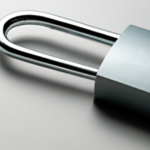Hey everyone! Imagine you’re piecing together a jigsaw and poof, one goes missing. Frustrating, huh? Well, think about your digital files kind of like that. But, what if I told you not all hope is lost? Yep, with some digital magic called data recovery, those “gone forever” files might just come back from the digital beyond. Dive into “How Data Recovery Works: A Simple Guide to Restoring Lost Files,” and we’ll peel back the curtain on this tech wizardry.
Data recovery can seem like a complex beast, but fear not. I’m here to break it down for you in simple, digestible terms. From accidental deletions to hard drive crashes, we’ll explore how recovery software digs deep into the nooks and crannies of your storage devices to bring back your valuable data. So, if you’re ready to turn ‘oops’ into ‘aha,’ let’s dive into the fascinating world of data recovery. Let’s get those lost files back where they belong!
Table of Contents
Overview of Data Recovery

To start, I’ll cover the essentials of how data recovery operates, focusing on what leads to data loss and the aims we pursue in data recovery ventures.
Basics of Data Loss
Data loss can occur for a plethora of reasons, something I know can be quite distressing. It ranges from hardware failures like a crashed hard drive to software issues such as corrupt files. Human error also plays a significant role, like accidental deletions or formatting. Then there are the uncontrollable elements like natural disasters which can wipe out physical storage systems. Here’s a breakdown:
- Hardware Malfunctions: Crashed hard drives, damaged flash drives.
- Software Corruption: Corrupt files, system crashes.
- Human Error: Accidental deletion, formatting errors.
- Natural Disasters: Floods, fires, and other catastrophes affecting physical storage.
Data Recovery Objectives
My goal when performing data recovery is straightforward: to restore as much lost data as possible with minimal disruption to ongoing operations. The objectives are typically twofold:
- Minimizing Data Loss: To restore the maximum amount of data, making sure that the impact of data loss is as insignificant as possible.
- Continuity of Business: Ensuring that business operations can continue with minimal interruption or downtime.
These aims must be balanced carefully to provide a successful data recovery following an incident.
Types of Data Storage Devices

In my experience, understanding the different types of data storage devices is crucial for effective data recovery.
Hard Disk Drives (HDDs)
I find that Hard Disk Drives (HDDs) are among the oldest and most widely used storage devices. They utilize magnetic storage to house vast amounts of data and are prized for their large storage capacity and cost-effectiveness. However, they have moving parts, which can make them susceptible to physical damage.
Solid-State Drives (SSDs)
Solid-State Drives (SSDs), on the other hand, store data on flash memory chips. I appreciate their faster data access speeds and durability since they contain no moving parts. They’re typically more resistant to physical shocks than HDDs and are quieter in operation.
USB Flash Drives
When it comes to portability, I often recommend USB Flash Drives. They’re compact flash memory devices designed for easy transportation and are universally compatible with devices sporting USB ports. Their storage capacity can vary, and they are commonly used for transferring files between computers.
Memory Cards
Finally, Memory Cards such as SD cards are essential for mobile devices and digital cameras. I value their small size and portability, making them ideal for expanding the storage of devices with limited built-in memory. They’re available in various capacities and speeds, tailored to different usage requirements.
Common Causes of Data Loss

Data loss can come from a variety of sources. I’ll outline some of the most common culprits below that threaten our digital information.
Accidental Deletion
In my experience, accidental deletion is perhaps the most common cause of data loss. This usually happens when I mistakenly erase files or format a drive. Though unintentional, the impact is immediate and often goes unnoticed until the data is needed.
Physical Damage
Physical damage to storage devices like hard drives can result in substantial data loss. I’ve seen drives suffer from overheating, water damage, or drops. Physical damage often hinders the drive’s ability to function, making data recovery difficult.
Software Corruption
Software corruption occurs when there’s an error in a program’s code or when an application does not run as expected. For example, if I improperly shut down my computer while a file is open, it may become corrupted. Such incidents can lead to the loss of the data within that file.
Virus and Malware Attacks
Lastly, virus and malware attacks are notorious for causing data loss. These malicious programs can delete or corrupt files on my system. Always keeping antivirus software up-to-date is crucial since these viruses evolve rapidly to exploit new vulnerabilities.
Data Recovery Techniques

Now, I’ll guide you through three specific techniques that are crucial for recovering data: Disk Cloning, File Carving, and Consistency Checking. Each method serves a particular scenario where data might seem lost, but with the right approach, I can often retrieve it.
Disk Cloning
I use Disk Cloning to create a sector-by-sector copy of a storage device. It’s an essential first step in many data recovery scenarios because it allows me to work with an exact replica of the data, ensuring the original source remains unaltered during the recovery process.
- When to use: If the drive is failing, I clone it to prevent further data loss.
- Tools I might use: Disk imaging software that can handle bit-by-bit replication.
File Carving
File Carving is my go-to method when the file system structure is damaged or not available. I recover files based on data content and known file structures; this technique does not rely on any file system metadata.
- How it works: By analyzing data signatures, I identify the start and end of files.
- File types: Commonly supports JPEG, PNG, GIF, and various document formats.
Consistency Checking
Lastly, Consistency Checking is the technique I employ to verify the integrity of the file system. It can identify and often fix logical issues that may be preventing access to the data.
- Process: I use specialized software to scan the file system for inconsistencies.
- Correction: In many cases, the software can repair corrupted file system structures.
Data Recovery Process

Data recovery is a meticulous procedure aimed at retrieving inaccessible, lost, or damaged data from various storage devices. Throughout the stages, careful attention to detail is paramount to ensure the best chances of success.
Initial Assessment
The first step in the process is performing an initial assessment to evaluate the extent of the data loss and to devise a strategy for recovery. I typically analyze the storage device to understand the nature of the problem—whether it is a logical issue, such as accidental deletion or corruption, or a physical one, like hardware failure.
Repairing Damaged Hardware
If the assessment reveals a physical failure, the next step is repairing damaged hardware. This may involve working in a cleanroom environment to avoid further damage and using specialized tools to replace faulty components such as read/write heads, motors, or electronics on the storage device.
Recovery Phase
During the recovery phase, I focus on extracting data in a safe and controlled manner. If the issue is logical, software tools are utilized to scan for recoverable files, reconstruct lost file systems, and restore data to a secure location. In cases of physical damage, this phase might involve creating a sector-by-sector image of the drive, from which data can be painstakingly pieced together.
Verification of Recovered Data
Finally, it’s essential to perform a verification of recovered data. I scrutinize the recovered files to ensure their integrity and completeness, comparing them against original file structures whenever possible. This step confirms that the data is usable and has been effectively restored.
Software Tools for Data Recovery

Data recovery software is essential when it comes to retrieving lost or deleted files. I’ll explore both freeware and commercial options that can help you get your data back.
Freeware Solutions
Freeware data recovery tools are available at no cost, offering basic functionality to recover files. It’s my experience that these are especially useful for accidental deletions or simple file recovery tasks from hard drives. One of the main advantages I’ve found with freeware is that they often allow you to scan your hard drive for free and preview recoverable files without any financial commitment.
- Recuva: A user-friendly tool that can recover files from your computer, recycle bin, digital camera card, or MP3 player.
- PhotoRec: This command-line interface tool excels at recovering lost files including videos, documents, and archives from hard disks, CD-ROMs, and lost pictures from camera memory.
Commercial Recovery Tools
When it comes to more complex recovery needs, commercial recovery software often provides advanced features and support. These tools may come with a cost, but I’ve noticed that they typically offer more thorough recovery processes, dealing with a wide range of data loss scenarios, such as partition recovery, formatted drive restoration, or even situations where freeware falls short.
- Stellar Data Recovery: Offers a robust service with options for individuals all the way up to large enterprises.
- EaseUS Data Recovery Wizard: Known for its easy-to-use interface and its ability to recover data from different types of devices like PCs, laptops, as well as external storage.
Remember to always back up your data to prevent the need for recovery, but rest assured that if you do find yourself in need, these tools can serve as your digital lifeline.
Professional Data Recovery Services

In my experience, professional data recovery services are a lifesaver when precious data seems lost. These services are highly specialized, and I’ll walk you through the three critical types.
Cleanroom Recovery
Cleanroom Recovery is essential when physical damage has been done to the storage media, like hard drives. I’ve seen technicians work in a controlled environment to prevent further contamination. They use advanced tools to meticulously reconstruct data from damaged disks. It’s fascinating to see how data can be reclaimed from what looks like total wreckage.
On-Site Recovery
For situations where sensitive data cannot leave the premises, On-Site Recovery services are the go-to. I’ve observed experts deploying to the location with their equipment to perform the recovery process right there. This is particularly important for businesses with strict data governance policies. It eliminates the risks associated with transporting the media.
Remote Recovery
Lastly, Remote Recovery is an efficient method when the data loss situation doesn’t require physical repair. It involves me (or any user) downloading a secure application that allows specialists to access my system and recover data over the Internet. I find it incredibly convenient and fast, requiring minimal downtime, which is great for urgent recovery needs.
Preventative Measures

To mitigate the risk of data loss, I focus on robust preventative strategies that ensure my data’s safety and recoverability.
Data Backup Strategies
I adhere to the 3-2-1 backup rule as my primary data backup strategy. This consists of:
- 3 copies of my data at minimum
- 2 different types of media
- 1 copy stored offsite
For instance, I maintain my original data on my computer’s hard drive, have a backup on an external hard drive, and keep another in a cloud storage service.
Using RAID for Redundancy
I implement RAID (Redundant Array of Independent Disks) configurations to add redundancy to my data storage. Here’s a quick glance at two RAID levels I use:
| RAID Level | Description | Benefit to Me |
|---|---|---|
| RAID 1 | Mirroring data on two or more disks | Provides real-time redundancy |
| RAID 5 | Striping data with parity across three or more disks | Allows for data recovery if a single drive fails |
This approach means even if one storage component fails, I don’t lose my data.
Regular System Maintenance
Lastly, I conduct regular system maintenance to prevent data loss due to hardware failure. My routine includes:
- Weekly: Check disk health and available storage space
- Monthly: Test backup recoverability and update software
- Quarterly: Clean hardware and verify environmental controls like temperature and humidity
This diligence keeps my data safer and ready for recovery if necessary.
The Last Word
And just like that, we’ve demystified the world of data recovery. As we wrap up “How Data Recovery Works: A Simple Guide to Restoring Lost Files,” I hope you feel empowered and a bit more tech-savvy. Remember, data loss isn’t necessarily the end of the road; it’s often just a bump along the way. With the right tools and a basic understanding of how recovery processes work, you stand a good chance of getting back what you thought was gone for good.
So next time you face a digital mishap, don’t despair. Equip yourself with a reliable data recovery tool, take a deep breath, and approach the situation with newfound knowledge and confidence. Here’s to less data loss anxiety and more successful recoveries in your digital journey. Keep exploring, keep learning, and most importantly, keep backing up those files!
How Data Recovery Works FAQs

In this section, I’ll answer some common queries about data recovery, providing insights into software advantages, selection criteria, methods, processes, effectiveness of free versus paid tools, and what physically happens during data recovery.
What are the advantages of using data recovery software?
Data recovery software can be a first-line solution when it comes to retrieving deleted or lost files. Its main advantage is the ability to recover files without sending the storage device to a professional, which can save both time and money.
What should you consider when choosing the best data recovery software?
When selecting data recovery software, consider its compatibility with your operating system and file system, the range of file types it can recover, the software’s ease of use, and the level of customer support provided.
How do different types of data recovery methods work?
Various data recovery methods include software recovery, which restores file information that hasn’t been overwritten; hardware recovery, which requires physical repairs on damaged devices; and forensic recovery, which seeks to restore data with minimal alteration for legal purposes.
Can you describe a typical process for recovering lost data?
Typically, the process begins with evaluating the extent of the data loss. Then, I would use recovery software to scan the affected drive for recoverable data. If successful, the software allows me to restore those files to a safe location.
How effective are free data recovery tools compared to paid versions?
Free data recovery tools can be effective for simple data loss scenarios, such as accidentally deleted files. However, paid versions often offer more advanced features and greater support, which can be vital for more complex or severe data loss situations.
What happens to my files during the physical data recovery process?
During physical data recovery, specialized technicians work in cleanroom environments to avoid further damage and use tools to read data from damaged components. They strive to create an image of the drive, from which data can be safely extracted and reconstructed.
- Amazon Email Phishing: How to Identify and Avoid Scams - May 11, 2025
- Malwarebytes vs McAfee: Decoding the Ultimate Antivirus Battle - May 11, 2025
- Best Antivirus for Windows 10: Expert Recommendations for 2023 - May 11, 2025









